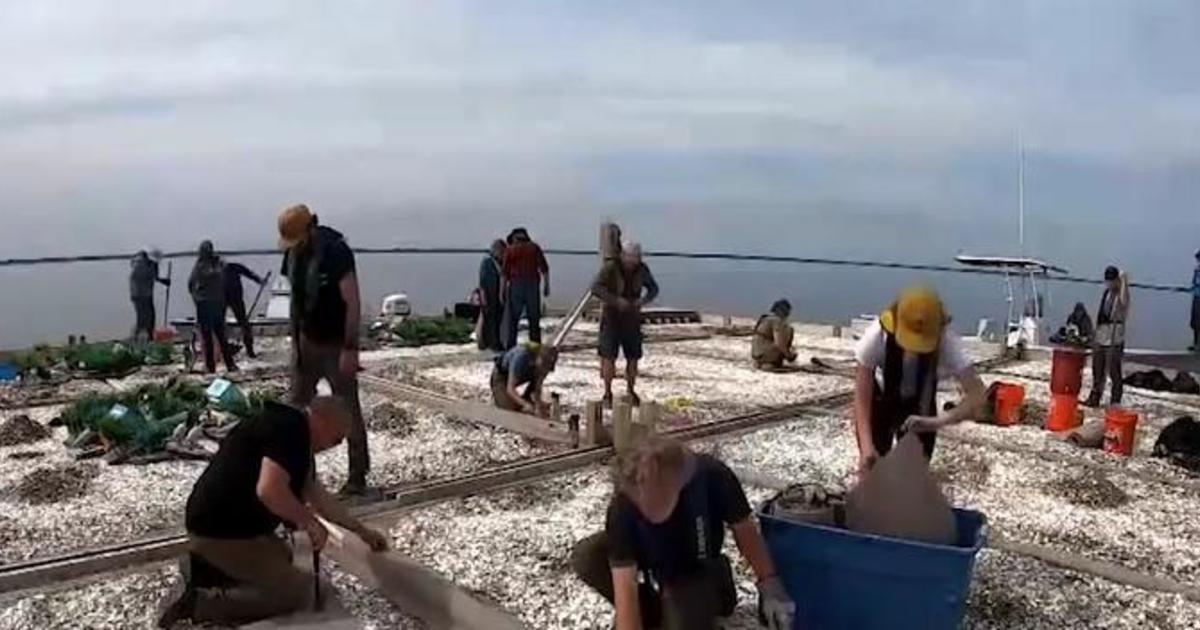Study: D.C.'s Cherry Blossoms Could Shift To Winter
MICHAEL RUANE and JAMES BUCK
The Washington Post
WASHINGTON (AP) -- Washington's cherry blossoms are busting out early this year, with buds popping so fast that a government work crew this week watched them unfurl on one tree in a single day.
The U.S. National Park Service had predicted an early bloom for the centennial year of the hallowed trees. But it has moved up the forecast twice, with temperatures in the 80s and more of the same expected.
Now comes a team of scientists theorizing that with drastic warming of the globe, future decades could see blossom times not
just a few days early but advanced by almost a month.
That could mean a bloom process that begins in January, rather than February, a blooming period in February instead of March, and a peak bloom in early March, instead of early April, the research suggests.
The ideas are contained in a scholarly paper published by experts at the University of Washington who studied data on the
Tidal Basin's blossoms, as "ideal indicators of the impacts of climate change."
"Their flowering time is highly sensitive to temperatures, especially during the winter and early spring," wrote Soo-Hyung
Kim, an assistant professor at the university's College of the Environment, and his colleagues.
The research, published last fall, was done in Kim's lab along with colleague Uran Chung and was detailed through the Park Service last week.
In a telephone interview Wednesday, Kim, a plant physiologist, said he used to work in a government agricultural facility in
Beltsville and often took his family to see the cherry blossoms.
In addition, he said the Park Service kept good records on the blossoms going back more than 60 years and provided it for his
research. "It tremendously helped me and made this study possible," he said.
According to the more dire global warming scenario the scientists used -- one with unchecked global population growth -- the
District's cherry trees could be blooming 29 days earlier by 2080 and 13 days earlier by 2050.
A less severe scenario, with eventually declining population, had the trees blooming 10 days earlier by 2080 and five days
earlier by 2050.
"Cherry blossom festivals of spring are culturally and economically important events," Kim's team wrote of events such as
Washington's annual blossom mania. "And successful planning requires that the cherry blossoms appear as expected within the
festival period.
"Our results suggest that the timing of (peak bloom) and the window of the National Cherry Blossom Festival may mismatch
towards the second half of this century," they wrote.
This year's early bloom offers an illustration.
The National Cherry Blossom Festival's centennial celebration, marking the first Tidal Basin planting in 1912, was expanded from
the usual two weeks to almost six weeks to better celebrate the anniversary. It's scheduled to start Tuesday and end April 27 but faces an elusive bloom period.
Spurred by one of the warmest winters on record, the blossoming process has accelerated, with the official bloom now expected by the National Park Service to start Sunday.
That's four days earlier than the initial forecast two weeks ago and two days before the festival begins. It could also mean a
shortened blooming period and some blossomless weeks at the close of the festival, officials said.
Robert DeFeo, Park Service horticulturist and chief cherry tree forecaster, said Wednesday that the weekend of March 24 and 25 should make for sublime blossom viewing, with the peak bloom period March 20 to 23.
"If you can come in, that's the time you want to come," he said. "People coming in and planning around April 4 , the average
(peak bloom date), I don't know. We may be looking at a 10-day bloom this year, whereas normally we could get up to 14 or
15."
DeFeo said with the higher temperatures, especially at night, the blooming process is going 24/7, instead of slowing in the
cooler evening hours. "They are moving," DeFeo said of the blossoms. DeFeo had provided Kim with the Park Service's tree data.
Many trees around the Tidal Basin on Wednesday bore fat buds, but there were plenty with the delicate white blossoms in full
bloom.
It's "very, very early" for the blooms, said Ellen Zelano of Falls Church, who was at the basin with her husband, Tony, on a day
more like summer than late winter. "We have a condo in Fort Lauderdale," Tony Zelano said. "It's warmer here today than it is
there."
DeFeo said he been talking this week with the crews that care for the cherry trees.
"They said they were working on a tree, and from the time they started to the time they left, some of the buds came out, when none were open when they started," he said. "Basically you're almost watching it" happen, over the course of a day.
He said of Kim's global warming report: "They're in a cerebral area that's so far out from me that I can't even intelligently
comment on it."
A spokeswoman said the Cherry Blossom Festival was not familiar with the report.
DeFeo noted that other scientists have already theorized that global warming might be behind the advance of bloom periods during the last 30 years or so.
Indeed, in 2000 Smithsonian scientists reported that the cherry trees were then blooming about a week earlier than they had in
1970, probably because of global warming.
DeFeo said there's no way to prove the future warming impact right or wrong.
He added in an e-mail: "We'll see in 2080."
Information from: The Washington Post, http://www.washingtonpost.com
(Copyright 2012 by The Associated Press. All Rights Reserved.)



